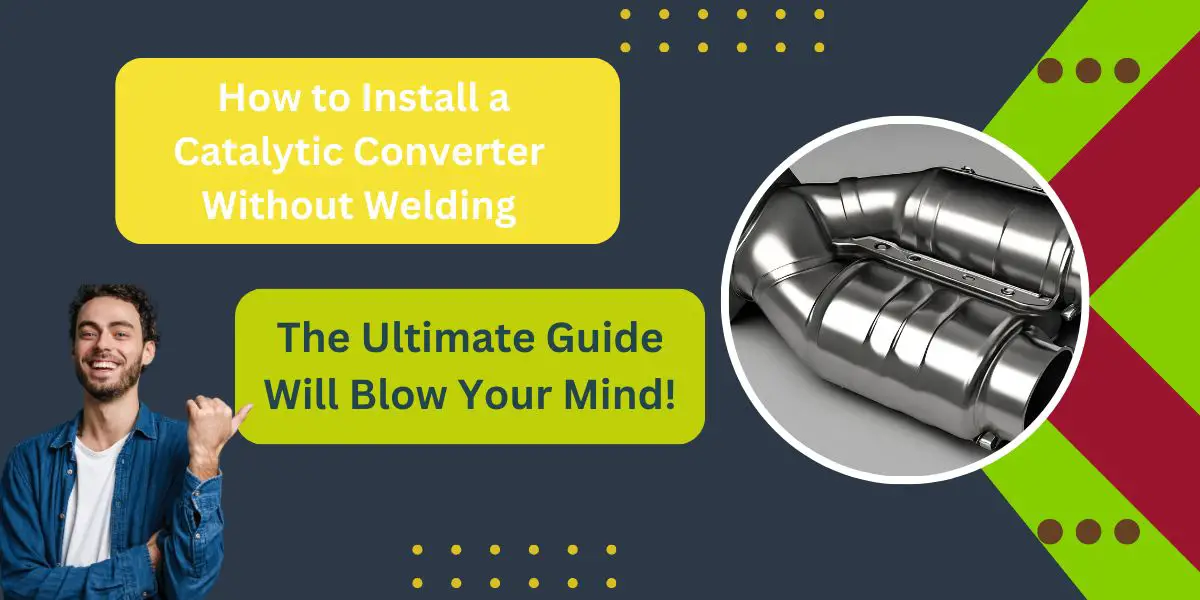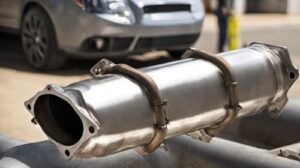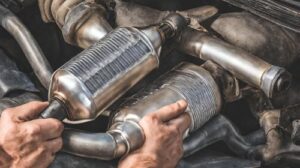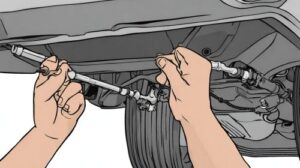Table of Contents
- How to Install a Catalytic Converter Without Welding Step-by-Step Guide
- The Role of a Catalytic Converter
- Types of Catalytic Converters
- Tools and Materials You’ll Need
- Safety Precautions
- Removing the Old Catalytic Converter
- Choosing the Right Replacement Converter
- Installing the New Converter
- Securing the Converter
- Testing the Installation
- Final Checks and Clean-Up
- Advantages of Weld-Free Installation
- Maintenance Tips
- Conclusion
- FAQs
Installing a catalytic converter is smart if you want to make your vehicle more eco-friendly and reduce harmful emissions. However, not everyone has access to welding equipment or the skills required for welding.
The good news is that you can install a catalytic converter without welding, and we’re here to guide you through the process. In this comprehensive article, we’ll cover everything you need to know about how to install a catalytic converter without welding, providing you with expert advice and practical tips.
How to Install a Catalytic Converter Without Welding Step-by-Step Guide
In this section, we’ll delve into the basics of catalytic converters, explaining their purpose, their work, and why they’re essential for your vehicle’s emissions control.
The Role of a Catalytic Converter
Catalytic converters are vital parts of your car’s exhaust system. They contain precious metals like platinum, palladium, and rhodium. These facilitate chemical reactions that convert harmful gases, such as carbon monoxide and nitrogen oxides, into less harmful emissions like carbon dioxide and water vapor.
Types of Catalytic Converters
There are two main types of catalytic converters: traditional and high-flow. Traditional converters are designed to meet emission standards and are often found in older vehicles. On the other hand, high-flow converters are preferred for performance improvements and are common in modern cars.
Tools and Materials You’ll Need
Before you begin installing, make sure you have these tools and materials ready:
– Safety gloves and goggles
– Wrench and socket set
– Jack and Jack stands
– New catalytic converter
– Exhaust clamps
– Penetrating oil
– Exhaust sealer
Safety Precautions
Always put safety first when working on your vehicle. Wear safety gloves and goggles to keep yourself safe from potential dangers. Ensure that your car is parked on a flat, stable surface, and use jack stands to support the vehicle during the installation process.
Removing the Old Catalytic Converter
Locate and Access the Converter
Begin by locating the old catalytic converter under your vehicle. It’s typically situated between the engine and muffler in the exhaust system. You may need to jack up the car to gain better access.
Disconnecting Exhaust Pipes
Use your wrench and socket set to disconnect the exhaust pipes leading to and from the catalytic converter. Apply penetrating oil to stubborn bolts if necessary.
Removing Mounting Bolts
Once the exhaust pipes are disconnected, remove the mounting bolts securing the catalytic converter in place. Keep these bolts handy, as you’ll need them when installing the new converter.
Choosing the Right Replacement Converter
Select a catalytic converter that matches your vehicle’s specifications. Choosing the correct type and size ensures proper compatibility and optimal performance.
Installing the New Converter
Fitting the New Converter
Position the new catalytic converter in place of the old one, aligning it with the exhaust pipes. Make sure it fits tightly with no gaps.
Using Exhaust Clamps
To avoid welding, use exhaust clamps to secure the new converter to the exhaust pipes. Be sure to tighten them well to stop any leaks.
Securing the Converter
Tightening Exhaust Clamps
Double-check that the exhaust clamps are tightened securely to prevent any exhaust leaks. This step is crucial for the proper functioning of the catalytic converter.
Reconnecting Exhaust Pipes
Reconnect the exhaust pipes that were previously disconnected. Tighten the bolts using your wrench and socket set.
Testing the Installation
Start your vehicle and listen for any unusual noises or leaks. Ensure that the exhaust system is functioning correctly and that there are no signs of exhaust gas escaping.
Final Checks and Clean-Up
Inspect the entire installation for any loose bolts or clamps. Clean up your work area and dispose of old parts and materials properly.
Advantages of Weld-Free Installation
Opting for a weld-free installation saves time and allows for easier replacement in the future. Plus, it’s a DIY-friendly method that doesn’t require specialized welding equipment.
Maintenance Tips
1 Regular Inspections
Periodically inspect your catalytic converter for signs of damage or wear. Early detection can prevent costly repairs down the road.
2 Cleaning the Converter
Consider cleaning the catalytic converter with a specialized cleaner to remove carbon buildup and maintain its efficiency.
Conclusion
Congratulations! You’ve successfully installed a catalytic converter without welding, reducing harmful emissions and ensuring your vehicle’s compliance with environmental regulations. This method saves you money on welding costs and allows for a DIY installation with standard tools.
By following these steps and ensuring a secure and leak-free installation, you contribute to a cleaner environment while enjoying the benefits of a well-functioning catalytic converter.
FAQs
What is a catalytic converter?
A catalytic converter is a part of a car’s exhaust system that helps reduce harmful emissions by converting them into less harmful substances before they’re released into the atmosphere.
Why is it important to install a catalytic converter without welding?
Installing a catalytic converter without welding is a cost-effective and DIY-friendly method that promotes environmental responsibility and reduces harmful emissions.
Can I install a catalytic converter without professional help?
Yes, you can install a catalytic converter without professional help by following this comprehensive guide.
How often should I inspect my catalytic converter?
Regularly inspect your catalytic converter during routine maintenance, and more frequently, if you notice any performance issues or unusual noises from your vehicle.
Are there any environmental benefits to using a catalytic converter?
Yes, catalytic converters play a vital role in reducing vehicle emissions, contributing to cleaner air and a healthier



